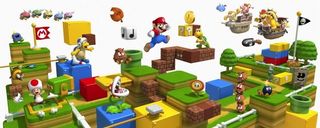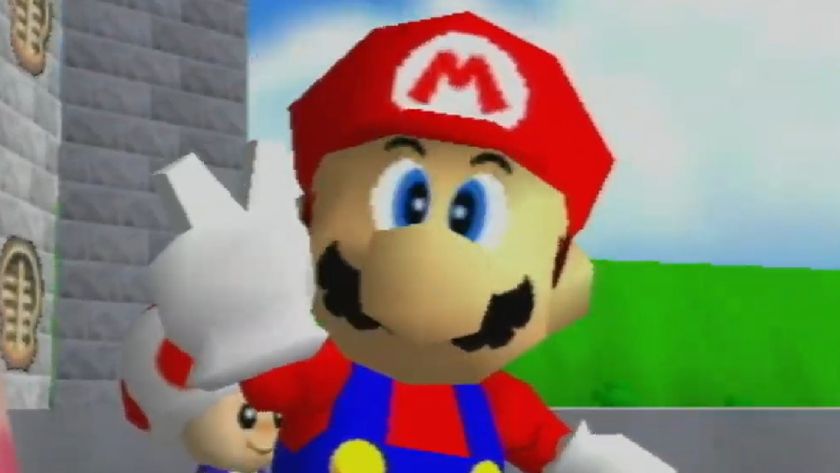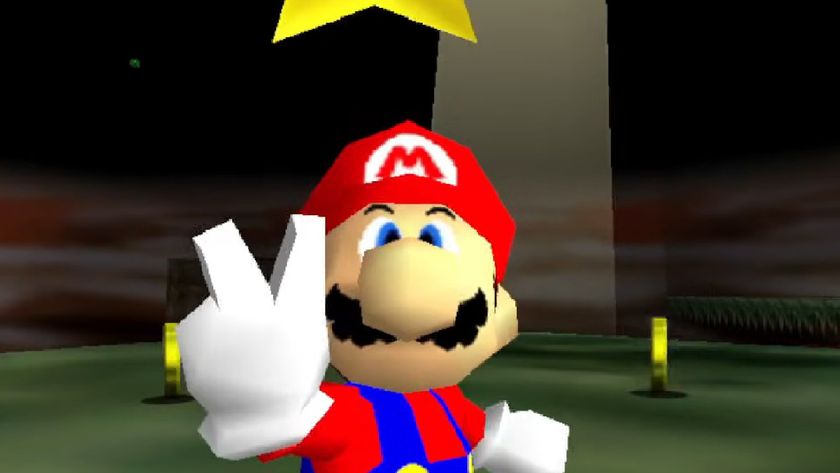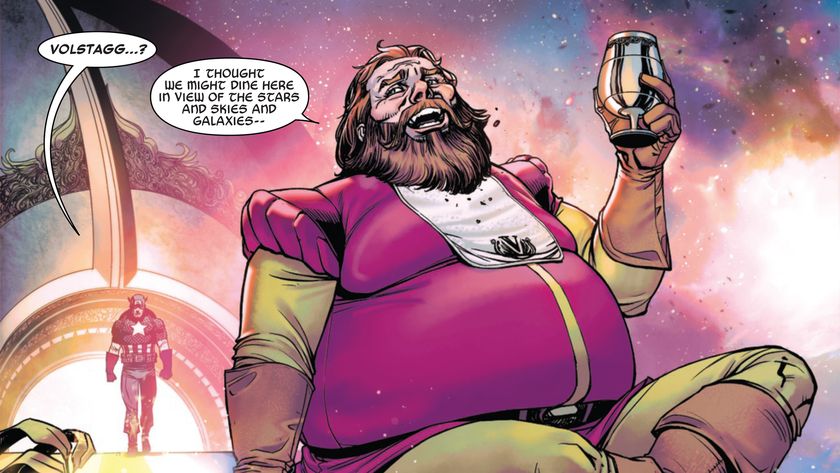Super Mario 3D Land interview - We talk with the director about secrets, Tanookis, and Mario's future
Koichi Hayashida shares with us some of his experience working on Mario titles for the last decade
Earlier this week we were introduced to Koichi Hayashida at his inspiring GDC presentation, and we could finally attach a face to the name we'd seen in credits for years. Among his accolades, Hayashida began working with Mario on Super Mario Sunshine, continuing to Super Mario Galaxy, then becoming the director for Super Mario Galaxy 2. That lead to Hayashida becoming the director of Super Mario 3D Land, as he and his team worked hard to create the plumber's most recent adventure.

Above: An introductory slide from his panel
As GDC came to a close, Mr Hayashida was nice enough to spare an hour of his time for an in-depth interview with GamesRadar. We spoke with him about creating Galaxy 2 and 3D Land, hidden secrets in both games, and the inspirations for various gameplay techniques. He even answered our questions about Mario's future when it comes to the Wii U, DLC, and if there'll ever be a Mario Galaxy 3. Read on...

GamesRadar: Thanks so much for your time. Was Super Mario 3D Land the first portable game you directed?
Koichi Hayshida: That’s right, it was my first portable game as a director. I directed (the Japan-only game) Joy Mech Fight, Mario Galaxy 2, then 3D Land. In fact this was the first portable game for the whole Nintendo EAD team. [Ed note: EAD is the Nintendo first party team that traditionally develops core Mario titles.]
GR: What lessons did you bring over from directing Galaxy 2 to 3D Land? Was the level of difficulty one of the things you and your team addressed?
KH: When we made Galaxy 2, we had people that really enjoyed Mario Galaxy 1 in mind, and we wanted to make sure we presented lots of interesting new ideas for them. Some of those ideas came from Mr Miyamoto himself, and others were ideas for really hard, challenging stages for people that mastered the first Galaxy. Other times we used ideas that we didn’t get to use in the first game. At a very early stage we were asking ourselves, “Is this going to be like Mario Galaxy 1.5?” But we ended up having so much content that we felt comfortable putting a new number on it.
Sign up to the 12DOVE Newsletter
Weekly digests, tales from the communities you love, and more
During that development we had people on the team saying, “I know someone who wasn’t able to play Galaxy 1 because they found it too difficult.” So we started thinking about how we could adjust the challenge for people that were beginners to the series. With Galaxy 2 we included an instructional video with the Japanese release titled “My First Mario,” giving people an introduction to the basics of the game to hopefully make them more comfortable playing.
I feel that was successful to a degree, but we weren’t quite able to reach everyone, and we needed to find a way to give these people an entry point into the series. We decided that’s what we wanted 3D Land to be. At the same time we still took care to make sure we gave a lot of challenges to advanced players.
GR: How was designing a 3D stage for a portable Mario different than on a console?
KH: Our first thought when designing the game was, and this might be a Japan-only consideration, is that you see a lot of people commuting in Japan to school or work. Usually they’re only playing for as long as it takes to go through a couple train stations, so I decided that’s how long I wanted it to take to clear a single stage. You certainly don’t have restrictions like that on a console game.
Another thing we had in mind was that many people are walking around with the system, so we put in StreetPass functionality. Obviously people don’t walk around with consoles, so that was something else we did new. As a design challenge we thought, “What could we provide for advanced player through StreetPass?” That’s led to the exchanging of clear times, so you could look at someone else’s time, someone you might not even know, and be motivated to play the stage again and try to beat that time.
GR: 3D Land brought back the full Tanooki suit from Super Mario 3, but that game also featured Raccoon Mario with just the tails and ears. Did you ever consider putting that item in 3D Land?
KH: When development had just begun on the game, we had created the ears and tail version as well as the full body suit, as well as one more that was in-between the two. We were testing all of these, asking the team members what they liked, but it seemed like they were choosing based only on visual appearance. We had to revert to a more functional mentality, deciding that the easiest one for the player to understand visually as a power-up was the full Tanooki suit.
GR: Playing 3D Land you notice a lot of love for Super Mario 3, but were there any elements of Mario 3 you wanted to add but couldn’t?
KH: I think we were able to get everything that we really wanted in 3D Land, though I have to say that the Statue Mario power barely made it in. (During development) whenever people saw the full body suit, without fail people would ask, “Oh, he’s going to turn into a statue, right?” So with a little bit of time left in our schedule, we were able to include it as a sort of reward for people that made it through first set of worlds. I was really happy with how that turned out.
Henry Gilbert is a former 12DOVE Editor, having spent seven years at the site helping to navigate our readers through the PS3 and Xbox 360 generation. Henry is now following another passion of his besides video games, working as the producer and podcast cohost of the popular Talking Simpsons and What a Cartoon podcasts.

A week after suffering webcam tragedy, blindfolded Super Mario 64 speedrunner casually breaks 3 world records in 4 days: "Another day in the office, another world record"

Super Mario 64 speedrunners thought a trick that requires landing on a spot "the width of a red blood cell" was virtually impossible - now it's been done blindfolded
Most Popular





